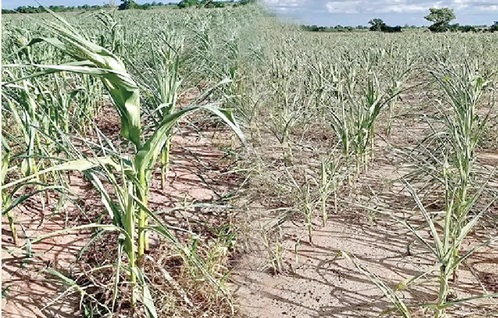
Where are our dams?
A front-page story in the Daily Graphic publication of August 16, 2024, caught my attention and worried me about the country’s food security.
According to the publication, “about 34,000 farmers in the middle and northern parts of the country risk defaulting on their bank loans due to the destruction of some farmers’ crops and the inability of others to plant as a result of inadequate rainfall.”
Interventions
As someone who lived through the hunger of the early 1980s when drought gave us our longest spell with hunger, I keep scratching my head wondering how we got here, although the government has implemented two key programmes – Planting for Food and Jobs and One Village, One Dam (1V1D)—to keep our food basket loaded even without the rains.
Seven years ago, the Akufo-Addo administration initiated the 1V1D project to transform the agricultural landscape in the northern parts of the country.
Recognising the challenges scanty and unreliable rainfall pose, millions of cedis were invested in constructing dams and dugouts to provide water for dry-season farming.
Game changer
The project was hailed as a game-changer that could lift countless families out of poverty, bolster food security and create a more resilient agricultural sector up north.
The idea behind the dams was sound. Northern Ghana has long been plagued by erratic and limited rainfall, making it difficult for farmers to rely solely on rain-fed agriculture.
By capturing and storing water during the rainy season, these dams were intended to provide a reliable source of irrigation during the dry months.
This, in turn, would allow farmers to cultivate crops year-round, improving their incomes, enhancing food security and reducing poverty in some of the country’s most vulnerable regions. Over GH¢200 million has been spent on these dams.
The harsh reality
Despite these good intentions and investments, the reality on the ground has been anything but successful. Farmers across the northern regions are now grappling with the devastating effects of crop failures.
The very dams that were supposed to be their salvation are failing to deliver the water they desperately need.
One of the primary reasons for this failure is the worsening climate crisis. While the north has always been prone to unpredictable weather, recent years have seen a dramatic decrease in rainfall.
The dams, which rely on capturing rainwater, are often left with insufficient reserves to support irrigation throughout the dry season.
With crops dying in the fields, farmers are unable to meet their loan obligations, pushing them further into poverty.
Worsening poverty, economic despair
The failure of these dams has far-reaching consequences, particularly in a region already struggling with poverty.
Many farmers in the north took out loans to invest in seeds, fertiliser and other agricultural inputs, banking on the rainfall to ensure a successful harvest.
Now, with crops failing, these farmers face the grim prospect of defaulting on their loans, which could lead to the loss of their collaterals, if that is the condition for their loans.
The economic implications extend beyond individual farmers. As agriculture is the backbone of the northern economy, the failure of these dams threatens the broader economic stability of the region.
When farmers struggle, the entire community feels the impact—local markets suffer, food supplies dwindle and poverty deepens.
The vision of a prosperous, food-secure north is slipping further away, replaced by the harsh reality of economic despair.
Food security at risk
At a time when food prices in Ghana are at an all-time high, the failure of these dams also poses a significant risk to national food security.
The north has the potential to be a breadbasket for the country, providing essential crops during the dry season when other regions are less productive. However, without reliable irrigation, this potential remains untapped.
The inability to cultivate crops year-round means that Ghana is increasingly dependent on food imports, making the country vulnerable to global price fluctuations and supply chain disruptions.
The Russia-Ukraine war and the Burkina Faso crisis. As food prices continue to rise, the most vulnerable populations will be hardest hit, exacerbating hunger and malnutrition.
The dream of self-sufficiency in food production is becoming more distant and the nation’s food security is at risk.
The situation in northern Ghana demands urgent attention. The failure of the dams is not just a technical issue—it is a humanitarian crisis in the making.
The government must take immediate steps to address the shortcomings of this project, including a thorough reassessment of the dams' design, construction and maintenance.
Additionally, there must be a renewed focus on climate-resilient agricultural practices. Farmers need support in adopting drought-resistant crops, water-efficient irrigation methods and other techniques that can help them cope with the challenges posed by a changing climate.
Given how stingy the sky has become in releasing rainfall, dams for irrigation are certainly the way to go.
We must, therefore, find a lasting solution for a permanent fix for useful dams and not those leaky earths we threw millions into. The time is now.
The writer is the Chancellor of the Wisconsin International University College and the immediate past President-General of the West Africa Nobles Forum

 Click the link to read your copy.
Click the link to read your copy.